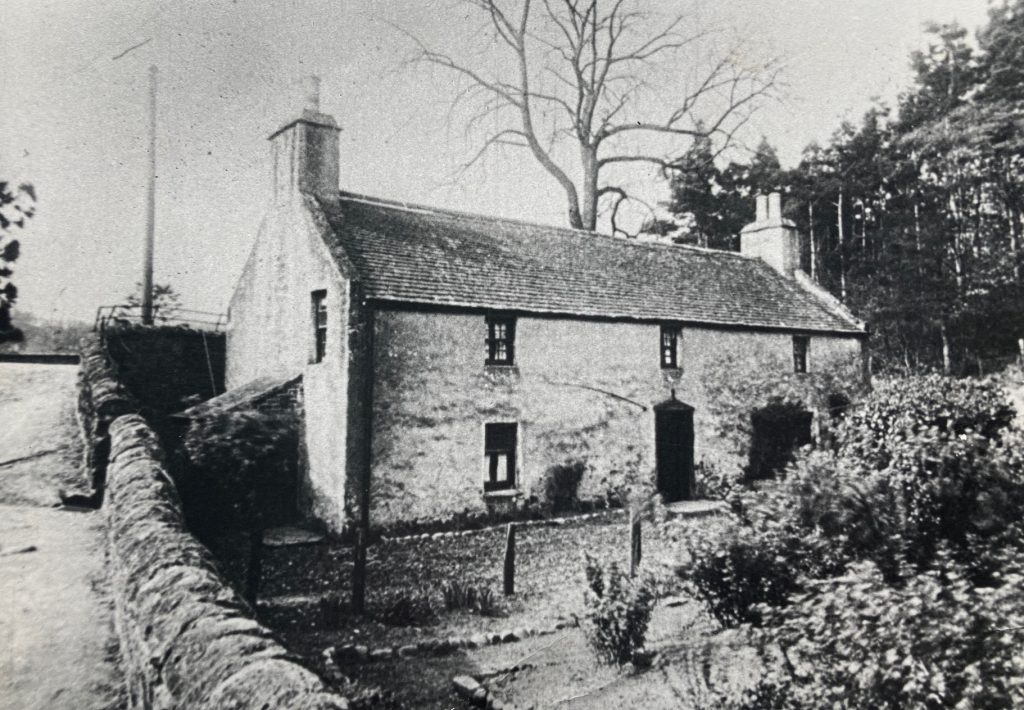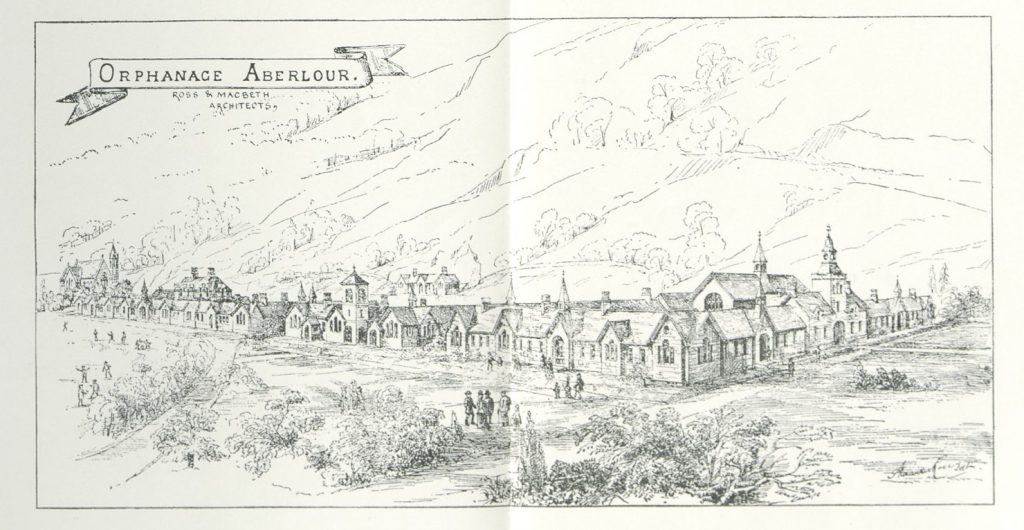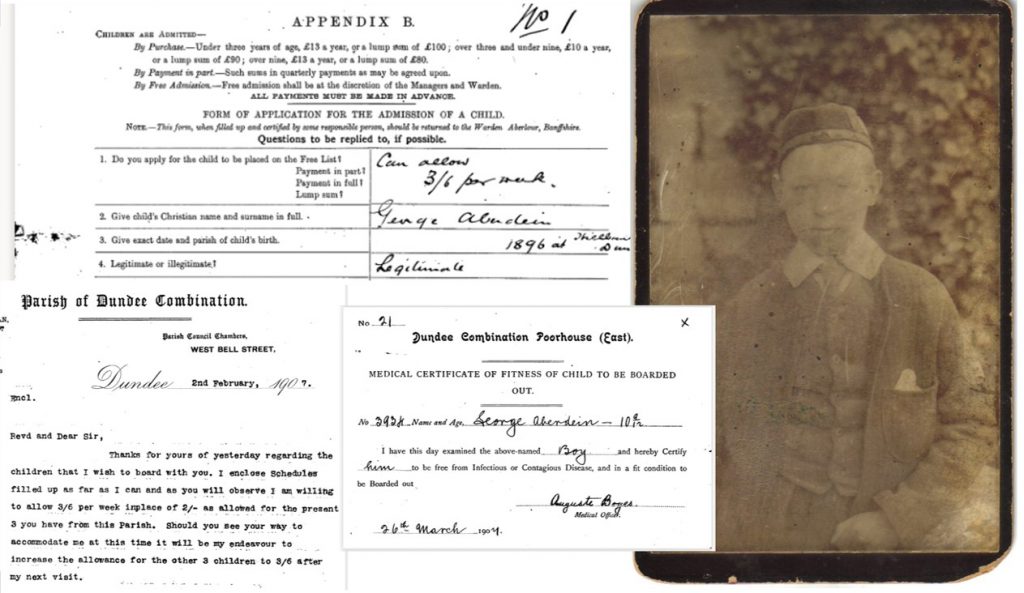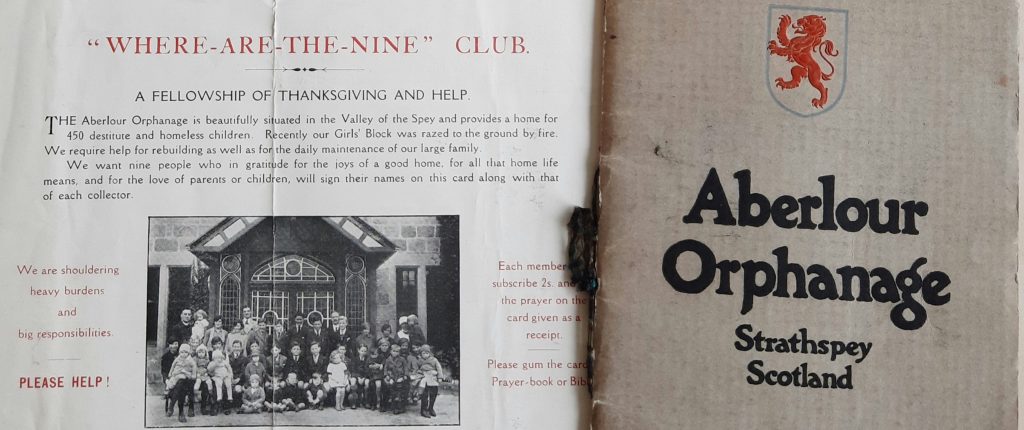In this article our Archives Revealed Project Archivist, Jennifer Roach, writes about her initial work opening up the archives of Aberlour Scotland’ Children’s Charity.
In January 2022 I started cataloguing the historical archive of Aberlour Scotland’s Children’s Charity, which has been made possible through funding from the Archives Revealed programme. The cataloguing project is also supporting the work of the ARCH (Archiving Children’s Residential Care Homes) team, working on an AHRC-funded project to improve current record-keeping practices in children’s homes through the analysis of historical records and design of new virtual ‘living archives’ with young people and care-experienced adults.
A History of Aberlour Orphanage:
The history of Aberlour dates to 1875 when an orphanage was founded by Canon Charles Jupp, a clergyman of the Scottish Episcopal Church. He had been asked by Miss Margaret Macpherson Grant of Aberlour, a town in north-east Scotland, to become her personal Chaplin, which he accepted on the condition that she fund the construction of an orphanage, rectory, and school. Burnside Cottage, on the banks of the Lour Burn, Speyside, was where Canon Jupp and his wife lived, with it also becoming the first home for the orphanage, with the Jupps taking in four “mitherless bairns” in 1875.


Construction of a permanent building started with the building of a church, designed by Alexander Ross, and dedicated to St Margaret. However, Miss Macpherson died unexpectedly in 1877, slowing the development of the orphanage and putting its future at risk. The legacy made by Mr W Grant of Wester Elchies in 1882 came to the orphanage’s aid, with £8,000 left to purchase land and construct a larger orphanage at Campbell’s Park, Aberlour. By 1885, Aberlour Orphanage could accommodate up to 100 children.
Boys and girls lived in separate wings of the Orphanage, with a school block at its centre. Additions to the building continued to be built, with more residential blocks added in 1902, and a laundry and isolation hospital created in 1906. Further facilities included a nursery, farm, and a swimming pool. The number of children continued to grow to around 600, making Aberlour one of the largest children’s establishments in Scotland, second to the Quarrier’s Homes.

As the Orphanage went from strength to strength, children would arrive not just from across Scotland, but also from England and Wales. When it was first established, it set out to support children only from Episcopalian families, however, over the years it broadened its scope to accommodate children from all religious denominations.
Dependent on a family’s circumstances, a child could be placed at Aberlour for free, or with part of full financial support being provided by the family or a charitable body representing the child. Whilst at the Orphanage, children were given an education and training to gain employment once they left the Orphanage, with girls generally going into domestic service, and boys going into apprenticeships or farm work, all placed with employers who had been vetted and approved of by staff at Aberlour. Those who showed strong academic skills were put forward for further education.
Until the mid-1930s, the children at Aberlour would have an annual outing to Lossiemouth. In 1935, a property was purchased at Hopeman, allowing for groups of children to go on week-long breaks to the seaside every year.
The Orphanage suffered from two fires, one in 1931 when almost all the east-block was destroyed, and another in 1937, when the west-block was destroyed by the blaze, meaning 200 boys had to temporarily take up residence in the school rooms. Amazingly, on both occasions, there were no casualties, with the effects of these being recorded in the administrative accounts of Aberlour, which are held with the archive.
Aberlour Child Care Trust:
The Orphanage closed in 1967 and was replaced with a series of services across Scotland. These small ‘family group’ homes were located across Scotland, with homes in Aberdeen, Stirling, Aberlour and Kirkcaldy to name a few. The original home was demolished, with all that remains of the original building being the clock tower and the church.
In 1969, the charity relocated its headquarters to Stirling, where they still operate today. The role of Warden, which had originally held by Canon Wolfe and who was responsible for the management of the Orphanage and day-to-day management of finances, was replaced by the Aberlour Trust Director.
Aberlour Child Care Trust remains the largest solely Scottish children’s charity, providing support and resources for vulnerable children, young people, and their families.
The project:
The collection provides a wealth of material showing the experiences of children in Aberlour’s care throughout its history, through magazines, photographs, and correspondence. The collection also holds administrative records detailing the running of the Orphanage, such as minutes, financial records, and annual reports.
There are around 3,000 case files, documenting children’s time under the care of the Orphanage, how they came to be there, and where they went after they left Aberlour’s care. These date from 1893 onwards, with application forms and correspondence from parents and concerned adults looking to provide a better situation and future for children. The files can also contain letters from the children themselves, writing to Aberlour as adults, regarding their time in the Orphanage. These offer first-hand accounts of life within the Orphanage and provide a true insight into what it was like to live there during this time.
Cataloguing these files is the main focus of this project, with the cleaning and rehousing of the documents in archive quality storage boxes to ensure their longevity for future generations also taking place. In doing this, we are providing a voice to the children of Aberlour and guaranteeing their experiences are not lost or forgotten.

